Raises the Alarm on Burdens Threatening Success of Historic Program
July 25, 2024— ACA Connects, in partnership with Cartesian, today announced the release of “BEAD Program: A Framework to Allocate Funding for Broadband Availability – Version 5.0.”
This newest version, using data from the latest National Broadband Map, estimates that when States and Territories begin to select broadband deployment projects, 5.4 million unserved and underserved locations will be eligible for BEAD program funding and that the program should be able to provide robust broadband service to all these eligible locations. This includes by deploying fiber infrastructure to reach between 70% and 90% of all eligible locations, depending on how funds are used.
In addition to this national framework highlighting the historic potential of BEAD investments to close the digital divide, ACA Connects and Cartesian issued a companion analysis demonstrating that BEAD will reach fewer locations with fiber if the National Telecommunications and Information Administration (NTIA) and states require providers to meet unreasonable affordability mandates or to incur high labor costs.
ACA Connects and Cartesian also found that requiring providers to deploy to large project areas would tend to diverge from efficient builds and therefore reduce fiber deployments. And, importantly, these mandates would deter smaller, experienced providers from participating in the program, which would further lessen the chances the program would achieve its objectives.
In a letter on the analysis, ACA Connects President and CEO Grant Spellmeyer said:
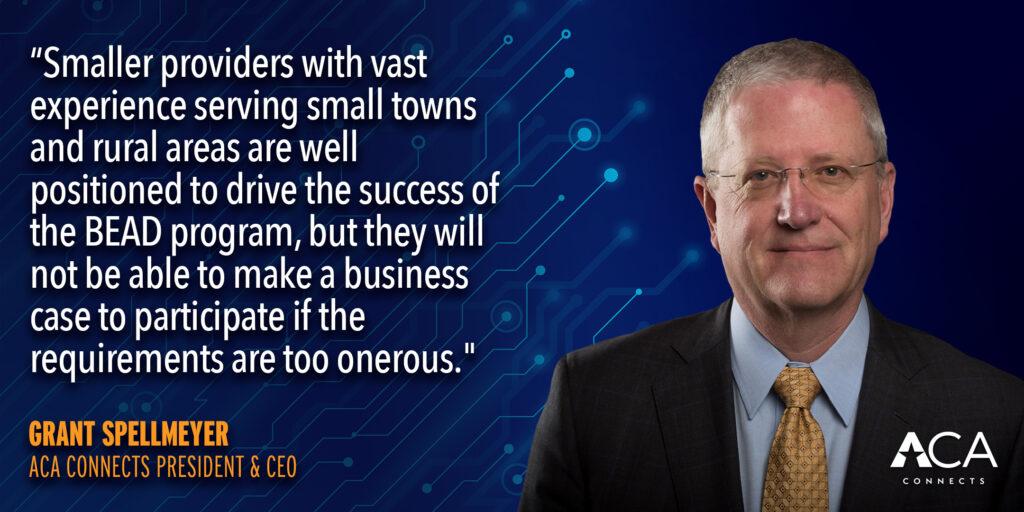
In the new modeling on the impact of rate regulations, labor requirements, and project area requirements, ACA Connects and Cartesian found these costs will lead to lower fiber coverage.
Further, as these requirements are layered on top of each other, even fewer locations are likely to get fiber. The modeling estimates that the combination of overly strict affordability mandates and prevailing wage obligations could reduce fiber coverage by as much as 34 percent, or 1.2 million locations.
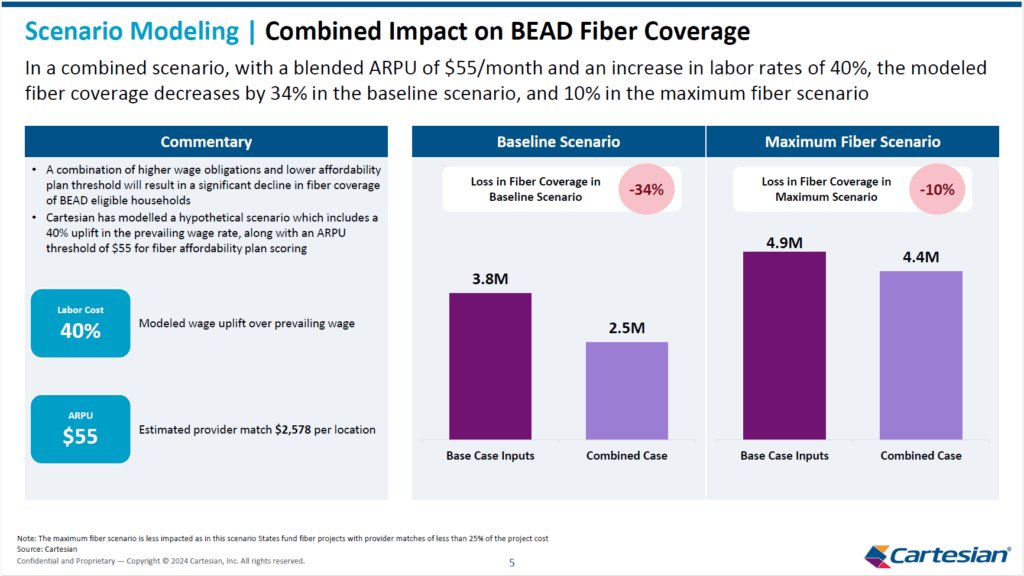
Specific Modeled Scenarios
Affordability mandates and rate regulations that ignore market-place reality will drive down provider participation, resulting in less fiber investment and coverage.
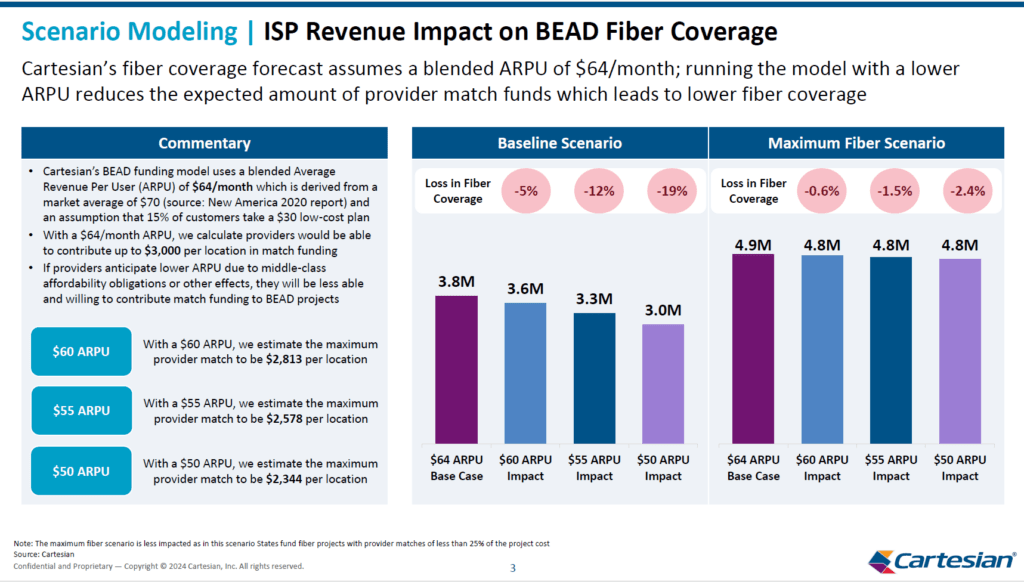
Prevailing wage requirements have the potential to dramatically increase costs, driving down deployments.
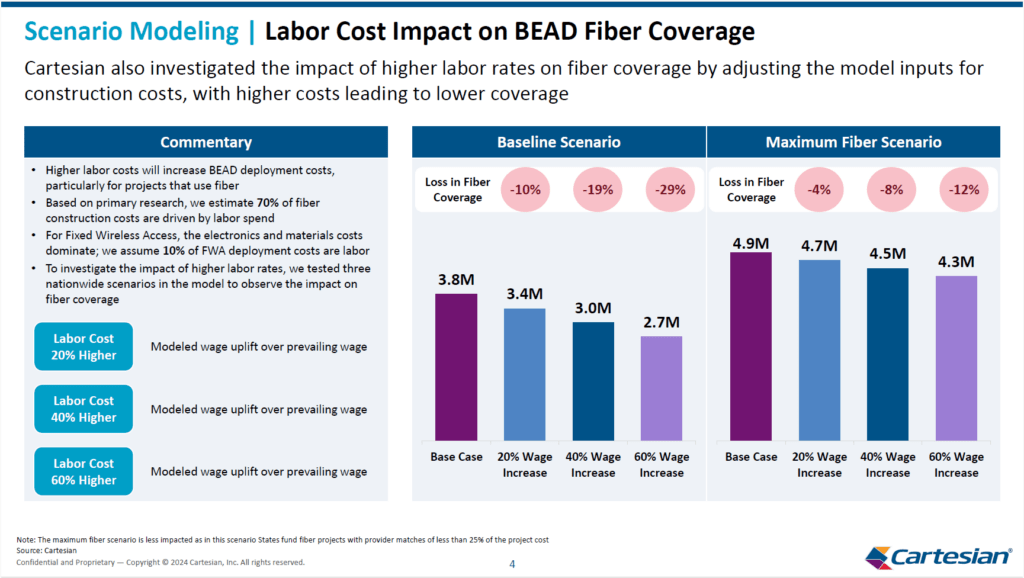
Finally, allowing ISPs to define project areas — or, at minimum, to aggregate project areas from their choice of census blocks — will encourage participation from smaller providers, promote competition, and drive better results.
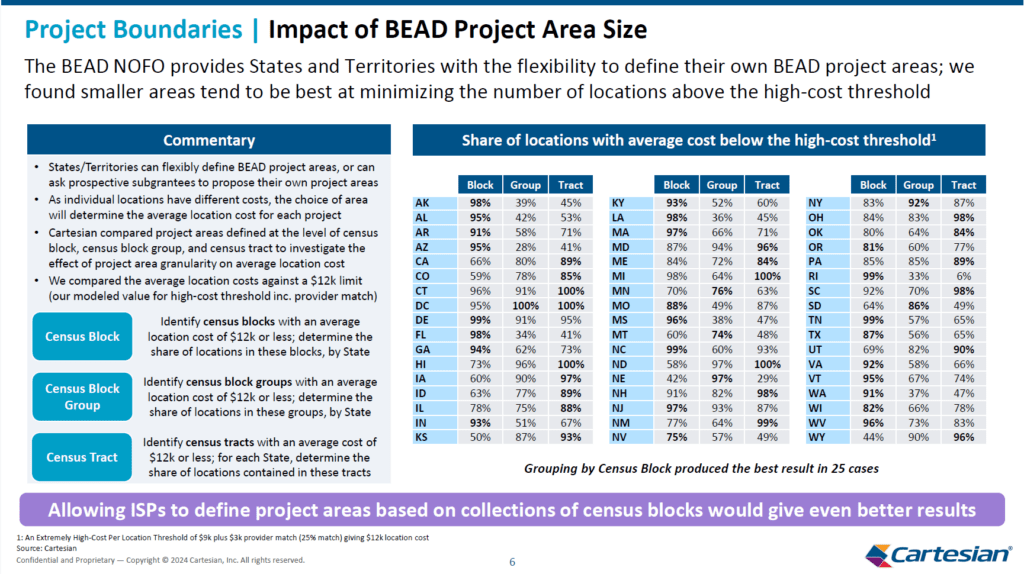
This released analysis from ACA Connects and Cartesian follows a letter more than 30 broadband groups sent this week to United States Secretary of Commerce Gina Raimondo raising the alarm that rural broadband providers are “increasingly concerned about their ability to participate” in BEAD.
VIEW AND READ:
– BEAD Framework—Version 5.0
– ACA Connects President and CEO Grant Spellmeyer’s Letter
– Analysis on Regulatory Impacts on BEAD Coverage


